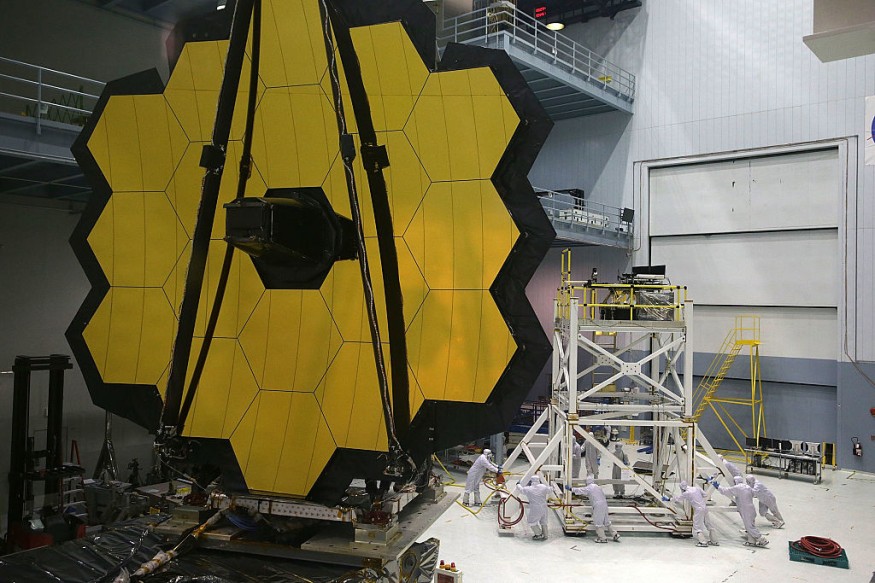Baltimore-based Space Telescope Science Institute is the center for NASA's once-in-a-generation James Webb Space Telescope, a replacement for its Hubble.
As specified in a report from The Baltimore Sun, it is capable of examining more thoroughly by looking deeper into space, and thus, further back in time.
The said news site also stated that roughly 30 minutes following the lunch of NASA's revolutionary James Webb Space Telescope into the cosmos in late December, Baltimore scientists will take over permanently if everything goes as planned.
From a mission operations center adjacent to Wyman Pak on Johns Hopkins University's Homewood campus, they will carefully guide the spacecraft to a point about one million miles from Earth, attune its instruments and have its 18 hexagonal mirrors aligned, which must all work in harmony to capture the so-called "heretofore unseen."

James Webb Space Telescope
The Webb telescope will look back more than 13 billion years at distant stars and galaxies, some of the first to form following the Big Bang.
Webb, described as a powerful infrared telescope, will be able to see a lot of things that Hubble, which is seeing mainly visible and ultraviolet light, simply cannot.
The Hubble successor will see through clouds of dust predecessor could not penetrate. It can also see celestial objects that cannot be reached by Hubble.
According to the institute's deputy director, Nancy Levenson, the Space Telescope Science Institute is experienced in this arena.
The Space Telescope Science Institute
After the launch of Hubble in 1990, officials there handled its science operations, while the Goddard Space Flight Center of NASA, monitored the craft. However, this time, the institute is doing both.
Levenson said, many people "do not know about Space Telescope Science Institute." She added that many were not aware of Hubb's role, which the institute has been doing for decades already. And so, she continued, they want to bring everybody along on this exciting journey.
Over the years, the more than $9 billion projects for the telescope, named after one of the early leaders of NASA, have made headlines for postponement after postponement.
Essentially, assembly of the telescope was completed by 2016, almost three decades after this institute of Baltimore hosted a Next Generation Space Telescope Workshop, the virtual birthplace of Webb.
However, when the scientists tested the observatory, problems started to arise. Such issues included tears found in the paper-thin sun shield, poorly installed nuts, leaks in the thruster valves, and bolts that were falling from the assembly.
What the Webb Space Telescope Should Show Us
The Webb Space Telescope offers more information about numerous additional galaxies this old and even older, which will help scientists understand how galaxies were first formed and changed into familiar shapes and structures presently seen, NPR reported.
According to astronomer Garth Illingworth from the University of California, Santa Cruz, there really is a need for much better samples. He added, there is a need to step back in time "to see how the galaxies are growing.
The James Webb Space Telescope features a technology that let it see back to 100 million to 200 million years following the Big Bang, the period, associate professor at the Cosmic Dawn Center of the Niels Bohr Institute and the University of Copenhagen, Charlotte Mason said, "When we think the very first galaxies formed."
Explanation about the James Webb Space Telescope is shown on Perception's YouTube video below:
RELATED ARTICLE : James Webb Space Telescope To Launch With The Largest Telescopic Mirrors Made Of Beryllium
Check out more news and information on Space in Science Times.
© 2025 ScienceTimes.com All rights reserved. Do not reproduce without permission. The window to the world of Science Times.











